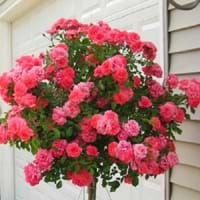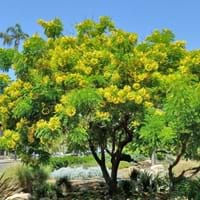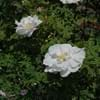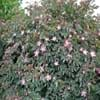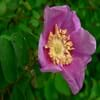Life Span
Perennial
Perennial
Type
Perennial
Flowering Plants, Tree
Origin
Hybrid origin
Brazil
Types
Not Available
Not Available
Habitat
All sorts of environments
Not Available
USDA Hardiness Zone
5-9
Not Available
AHS Heat Zone
9-1
Not Available
Sunset Zone
H1, H2, 6, 7, 8, 9, 12, 13, 14, 15, 16, 17, 18, 19, 20, 21, 22, 23, 24
Not Available
Habit
Upright/Erect
Upright/Erect
Flower Color
Red, Ivory
Yellow
Flower Color Modifier
Not Available
Bicolor
Fruit Color
Non Fruiting Plant
Not Available, White
Leaf Color in Spring
Dark Green
Dark Green
Leaf Color in Summer
Dark Green
Dark Green
Leaf Color in Fall
Dark Green, Yellow green, Orange Red
Dark Green
Leaf Color in Winter
Light Green
Dark Green
Leaf Shape
Pinnate
Pinnate
Plant Season
Spring, Summer, Fall
Spring, Summer, Fall
Sunlight
Full Sun, Partial Sun
Partial shade, Full Shade
Growth Rate
Medium
Medium
Type of Soil
Loam, Sand
Loam
The pH of Soil
Acidic, Neutral
Acidic, Neutral, Alkaline
Soil Drainage
Well drained
Well drained
Bloom Time
Spring, Late Spring, Early Summer, Summer, Late Summer, Early Fall, Fall
Indeterminate, Summer
Repeat Bloomer
Not Available
No
Tolerances
Drought
Drought
Where to Plant?
Container, Ground, Pot
Ground
How to Plant?
Cuttings
Seedlings, Stem Planting
Plant Maintenance
Medium
Medium
Watering Requirements
Average Water Needs
Requires regular watering
In Summer
Lots of watering
Lots of watering
In Spring
Moderate
Moderate
In Winter
Average Water
Average Water
Soil pH
Acidic, Neutral
Acidic, Neutral, Alkaline
Soil Type
Loam, Sand
Loam
Soil Drainage Capacity
Well drained
Well drained
Sun Exposure
Full Sun, Partial Sun
Partial shade, Full Shade
Pruning
Remove damaged leaves, Remove dead branches, Remove dead leaves
Requires very little pruning
Fertilizers
All-Purpose Liquid Fertilizer
All-Purpose Liquid Fertilizer
Pests and Diseases
Beetles, Black Spot, Caterpillars, Downy mildew, Mosaic viruses, Powdery mildew, Rust, Scale insects, Thripes
Red blotch, Thripes
Plant Tolerance
Drought
Drought
Flower Petal Number
Double
Single
Edible Fruit
Not Available
No
Foliage Texture
Medium
Bold
Foliage Sheen
Glossy
Matte
Invasive
Not Available
No
Self-Sowing
Not Available
No
Attracts
Birds, Butterflies
Not Available
Allergy
Rash
Not Available
Aesthetic Uses
Showy Purposes
Showy Purposes
Beauty Benefits
Not Available
Not Available
Environmental Uses
Air purification
Air purification
Medicinal Uses
Not Available
No Medicinal Use
Part of Plant Used
Flowers
Whole plant
Other Uses
Oil is used in perfume, soaps, creams, etc.
Used as Ornamental plant
Used As Indoor Plant
Yes
No
Used As Outdoor Plant
Yes
Yes
Garden Design
Container, Cutflower, Feature Plant, Foundation, Mixed Border, Topiary / Bonsai / Espalier
Shady Tree, Showy Tree
Botanical Name
Rosa Andeli
Cassia leptophylla
Common Name
Double Delight Rose, Hybrid Tea Rose
gold medallion tree
In Hindi
Double Delight Rose
gold medallion tree
In German
Double Delight Rose
gold medallion tree
In French
Double Delight Rose
gold medallion tree
In Spanish
Double Delight Rose
árbol medallón de oro
In Greek
Double Delight Rose
χρυσό δέντρο μετάλλιο
In Portuguese
Prazer dobro Rosa
árvore medalhão de ouro
In Polish
Double Delight Rose
Drzewo Medalion złota
In Latin
Double Delight Rose
aureus arbore
Phylum
Magnoliophyta
Magnoliophyta
Class
Magnoliopsida
Magnoliopsida
Clade
Not Available
Angiosperms, Eudicots, Rosids
Tribe
Not Available
Not Available
Subfamily
Not Available
Not Available
Number of Species
Not Available
Not Available
Properties of Double Delight Rose and Cassia Leptophylla
Wondering what are the properties of Double Delight Rose and Cassia Leptophylla? We provide you with everything About Double Delight Rose and Cassia Leptophylla. Double Delight Rose has thorns and Cassia Leptophylla doesn't have thorns. Also Double Delight Rose does not have fragrant flowers. Double Delight Rose has allergic reactions like Rash and Cassia Leptophylla has allergic reactions like Rash. Compare all the properties and characteristics of these two plants. Find out which of these plant can be used as indoor plant. If you are interested to decorate your house and garden, find out aesthetic uses, compare them and select the plant which will beautify your surrounding. Along with beautification, try comparing medicinal and edible uses of Double Delight Rose and Cassia Leptophylla and you can choose the plant having best and most benefits.
Season and Care of Double Delight Rose and Cassia Leptophylla
Season and care of Double Delight Rose and Cassia Leptophylla is important to know. While considering everything about Double Delight Rose and Cassia Leptophylla Care, growing season is an essential factor. Double Delight Rose season is Spring, Summer and Fall and Cassia Leptophylla season is Spring, Summer and Fall. The type of soil for Double Delight Rose is Loam, Sand and for Cassia Leptophylla is Loam while the PH of soil for Double Delight Rose is Acidic, Neutral and for Cassia Leptophylla is Acidic, Neutral, Alkaline.
Double Delight Rose and Cassia Leptophylla Physical Information
Double Delight Rose and Cassia Leptophylla physical information is very important for comparison. Double Delight Rose height is 90.00 cm and width 90.00 cm whereas Cassia Leptophylla height is 1,300.00 cm and width 1,200.00 cm. The color specification of Double Delight Rose and Cassia Leptophylla are as follows:
Double Delight Rose flower color: Red and Ivory
Double Delight Rose leaf color: Dark Green
Cassia Leptophylla flower color: Yellow
- Cassia Leptophylla leaf color: Dark Green
Care of Double Delight Rose and Cassia Leptophylla
Care of Double Delight Rose and Cassia Leptophylla include pruning, fertilizers, watering etc. Double Delight Rose pruning is done Remove damaged leaves, Remove dead branches and Remove dead leaves and Cassia Leptophylla pruning is done Requires very little pruning. In summer Double Delight Rose needs Lots of watering and in winter, it needs Average Water. Whereas, in summer Cassia Leptophylla needs Lots of watering and in winter, it needs Average Water.
